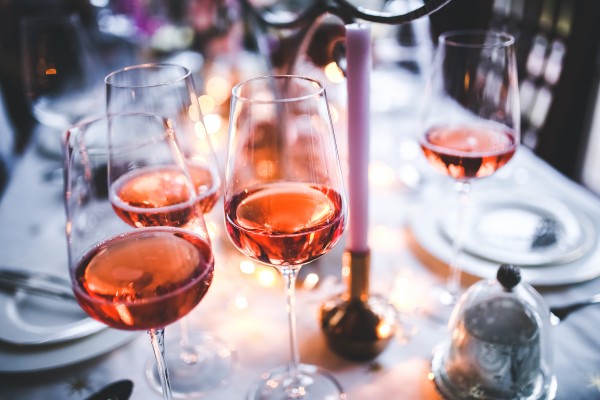6 Things You Didn’t Know About Rosé
Contributed by on Jun 17, 2016
Five readers love this post.
Summertime means lazy weekends at the beach or the park, easygoing barbecues with friends and staying cool through it all with the perfect, ultra-refreshing libation, rosé. Find out how it’s made, plus a few more fun facts about our favorite pink drink.
Rosé is a type of wine that incorporates some of the color of grape skins, but not enough to qualify it as a red wine. It may be the oldest known type of wine, whose pink color can range from pale to vivid near-purple depending on the grape varietals and winemaking techniques used. The two most popular ways to produce rosé wine are: skin contact and saignée.

The skin contact method
In the most common method, black-skinned grapes are crushed and the skins are allowed to macerate (remain in contact with the juice) for a brief amount of time, anywhere from 12 hours to three days. The resulting “must” (fresh fruit juice that contains the skins, leaves and stems of the fruit) is then pressed, and the skins are discarded rather than left in contact throughout fermentation (as with red wine making). Because of the limited maceration time, rosés produced in this way are less stable than reds, contributing to their shorter shelf-life.
The saignée method
Used to make the best quality rosés, the saignée (French for “bleeding”) method involves saving off some of the juice from a red wine in the early stage of production. If a winemaker wants to have more tannin and color in his red wine, he can remove some of the juice from the “must.” The red wine remaining in the vats is intensified, and the pink juice that is removed can be fermented separately to produce rosé. Since the juice is only in contact with grape skins for a very short time, these rosés tend to be the palest in color and have the freshest, cleanest taste.
Here are 6 more facts you might not know about rosé:
FUN FACTS ABOUT ROSÉ WINE
1. Darker rosés “macerated” longer.
The longer the grape skins were left in contact with the juice, the more intense the color of the final wine.
Choose the rainbow at Oro in San Francisco, where eclectic California fare finds the perfect complement in several delicious, beautifully tinted rosés.
2. They can be made all over the world.
Rosés are produced in places far and wide, including Spain, France, United States, Germany, Australia and more.
Located inside Duane Street Hotel in New York’s posh TriBeCa neighborhood, Graffiti Earth offers a fantastic Bruno Tropan Ruby Rose, produced in Croatia, to pair with its globally inspired small plates.
Also in NYC, The Greek is a rustic village taverna that features incredible wines from Greece, including reds, whites and a specially selected, seasonal rosé.
3. But when in doubt, go with the French one.
France is well known for producing excellent rosés, so if you’re in no mood to take chances, a selection from Provence, Rhone, Loire Valley, Burgundy or Champagne — home to consistent rosé excellence — are solid bets.
Centre Street Cafe in Boston offers several rosés by the glass, ½ carafe, carafe and bottle, to pair with its fresh Mediterranean and Italian dishes.
4. They can be bubbly or flat, super-dry or ultra-sweet.
Rosés can be made still, semi-sparkling or sparkling with a wide range of sweetness levels from bone-dry to very sweet.
A Spanish restaurant and wine bar, smoke.oil.salt in Los Angeles has over 130 regional wines, cavas and sherries to choose from, including several rosés.
5. Rosés go great with all kinds of food.
Want to change up your brunch routine? Swap out those bottomless Bloody Marys for a glass of rosé. How about something other than beer with fried chicken? The bright, refreshing taste of rosé is a great match for lots of delicious dishes.
In addition to cocktails and beers, Ostrich Farm in LA features a crisp rosé to pair with its fresh New American fare, including tartines, sandwiches and salads.
Rosés are also great with fried foods, including the amazing fried chicken — made from happy Amish chickens and seasoned for 48 hours — from Birds & Bubbles in NYC
6. Rosé season is officially here.
According to Google, online search volume for the word “rosé” peaks in July, so get ready to paint the summer in pink.
The French-focused wine program at BISq in Boston spotlights several awesome rosés, so grab some friends and settle in for a catch-up session filled with small bites and many glasses of goodness.








